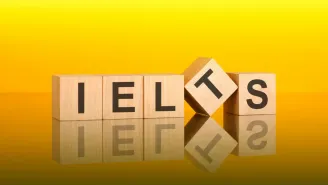When A Country Develops Its Technology: How to Answer
When preparing for IELTS Writing Task 2, it's crucial to adhere to certain guidelines to maximise your score potential. Firstly, structure your essay clearly with an introduction, body paragraphs, and a conclusion. The introduction should succinctly introduce the topic and present your stance or opinion.
In the body paragraphs, develop your ideas coherently and logically, supporting them with relevant examples or evidence. Ensure each paragraph focuses on a single main idea, using cohesive devices to link sentences and paragraphs together smoothly. Additionally, demonstrate a wide range of vocabulary and grammatical structures to showcase your language proficiency.
Finally, in the conclusion, summarise your arguments and restate your viewpoint, providing a final thought or recommendation if appropriate. Overall, maintain a formal tone throughout and aim for clarity and precision in expressing your ideas within the 250-word limit.
The topic will look like this:
Here's how you can structure and answer your essay on the topic:
1. Introduction:
- Paraphrase the Question: Begin by paraphrasing the given statement to show your understanding.
- State Your Position: Clearly state whether you agree or disagree with the statement. This sets the tone for your essay and provides clarity to the reader on your stance.
- Outline Your Main Points: Briefly outline the points you will discuss in the body paragraphs to support your position. This helps to give a roadmap for your essay.
2. Body:
- First Body Paragraph:
- Topic Sentence: Begin with a clear topic sentence that introduces the main idea of the paragraph. For example, "Traditional skills are repositories of cultural heritage."
- Supporting Points: Provide reasons or examples to support your topic sentence. These could include arguments about cultural identity, community cohesion, or historical continuity.
- Second Body Paragraph:
- Topic Sentence: Introduce another aspect related to the preservation of traditional skills. For instance, "Traditional skills often complement modern technologies."
- Supporting Points: Discuss how traditional skills can offer unique insights or solutions that modern technologies may not always provide. This could involve examples of sustainability, craftsmanship, or localised knowledge.
- Third Body Paragraph:
- Topic Sentence: Address the practical benefits of maintaining traditional skills alongside technological development. For example, "Preserving traditional skills fosters diversity and resilience."
- Supporting Points: Discuss the economic or environmental benefits of preserving traditional practices. This could include arguments about sustainable practices, local economies, or niche markets.
3. Conclusion:
- Summarise Your Arguments: Recap the main points you have discussed in the body paragraphs. Emphasise how each supports your disagreement with the given statement.
- Reaffirm Your Position: Clearly state your stance once more and briefly restate why you believe it to be valid.
- Final Thought: End with a thought-provoking statement or a call to action related to the preservation of traditional skills. This helps to leave a lasting impression on the reader.
Read more about IELTS Writing 6 – Tips And Tricks To Improve Beyond Band 6 in IELTS.
When A Country Develops Its Technology: Sample Essay
Let's explore essay samples for When A Country Develops Its Technology.
Introduction:
In today's rapidly advancing world, the drive towards technological development often leads to the decline of traditional skills and ways of life. Some argue that attempting to preserve these traditions is futile in the face of progress. However, I firmly believe that such efforts are not only necessary but also crucial for maintaining cultural diversity and social resilience.
Body:
Technological advancements enhance efficiency and quality of life, driving industrial evolution, economic growth, and societal interconnectedness. However, this progress risks eroding traditional skills, threatening community identity and heritage. For example, crafts like handcrafted textiles or pottery, once integral to local cultures, may fade due to mechanised production. Without preservation efforts, these cultural heritages could be lost forever.
Traditional ways of life often include sustainable practices that are relevant today. Indigenous agricultural knowledge provides insights into ecological balance and resilience against climate change. Integrating these practices with modern technologies helps achieve sustainable development goals while preserving cultural integrity.
Moreover, preserving traditional skills fosters community pride and belonging. Artisans maintaining age-old crafts uphold cultural heritage and support local economies through tourism and artisanal markets. This promotes social cohesion and empowers marginalised groups, ensuring technological progress benefits all.
Conclusion:
In conclusion, while advancing technology is crucial for progress, it must not overshadow traditional skills and lifestyles. Preserving these cultural assets is essential for diversity, sustainability, and community strength. Collaboration among governments, businesses, and individuals is necessary to integrate technological innovation while protecting our cultural heritage. This balanced approach ensures a future that is both technologically advanced and culturally vibrant.
Read more about IELTS Connectors for Task 1 & Task 2: Linking Words for IELTS Writing 2024






